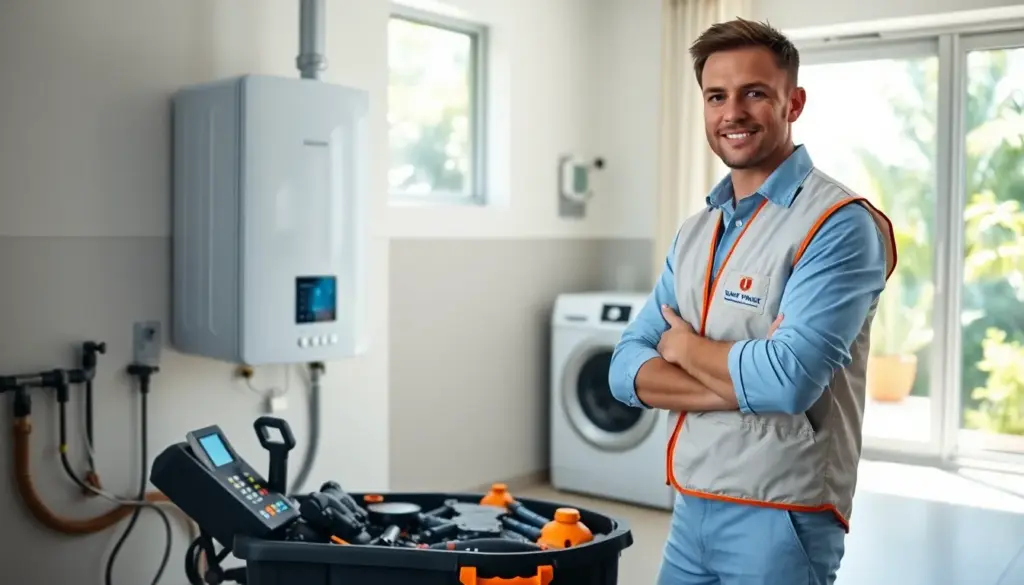Maintaining a sloped lawn can be a daunting task, but remote-controlled mowers are changing the game. These innovative machines offer a practical solution for tackling uneven terrain with ease and efficiency. In this article, readers will find the numerous benefits of using remote-controlled mowers, from enhanced safety to reduced labor, making lawn care simpler and more enjoyable.
Overview of Remote-Controlled Mowers
Remote-controlled mowers are innovative machines designed for lawn maintenance, especially on sloped or uneven terrain. These devices operate without direct human intervention, allowing users to control them from a distance. Equipped with advanced technology, remote-controlled mowers feature sensors and GPS navigation, ensuring accurate and efficient mowing patterns.
Many rc mowers utilize battery power, promoting environmental sustainability by reducing emissions. They also offer adjustable cutting heights, making it easy to achieve desired lawn aesthetics. Users can program mowing schedules and specify areas for maintenance, enhancing convenience.
These mowers prioritize safety by incorporating features like obstacle detection, which prevents accidents and equipment damage. Remote-controlled operation also minimizes the risk of slips or falls when managing steep lawns. By reducing the physical demands of lawn care, these mowers not only protect users but also increase productivity and enjoyment of the outdoor space.
Overall, remote-controlled mowers represent a modern solution for maintaining sloped lawns. Their combination of technology, safety features, and user-friendly controls makes them an advantageous choice for homeowners seeking efficient lawn care.
Advantages of Using Remote-Controlled Mowers

Remote-controlled mowers offer significant advantages for maintaining sloped lawns, enhancing both convenience and productivity.
Efficiency and Time Savings
Remote-controlled mowers operate autonomously, reducing the time required for lawn maintenance. They can cover large areas quickly, allowing users to focus on other tasks. Additionally, programmable schedules enable users to set mowing times, ensuring consistent maintenance without the need for manual intervention. This automation leads to overall time savings, which is critical for busy homeowners.
Reduced Physical Strain
Remote-controlled mowers minimize physical exertion while mowing sloping terrains. Users control the mower from a distance, avoiding strenuous tasks like pushing a traditional mower or maneuvering on uneven ground. This feature is particularly beneficial for individuals with mobility limitations or those who prefer to avoid physical strain. Reduced physical demands increase user comfort and make lawn maintenance more accessible for everyone.
Safety Considerations for Sloped Lawns
Remote-controlled mowers improve safety on sloped lawns by incorporating essential features that address the challenges of uneven terrain.
Stability and Control Features
Stability remains crucial for mowing on slopes. Remote-controlled mowers typically include wide wheels or tracks that provide improved grip and balance. Advanced sensors may detect incline angles, allowing the mower to adjust its operation accordingly. The control systems on these mowers enable operators to maintain a steady trajectory, minimizing the risk of tipping or losing control.
Preventing Accidents and Injuries
Preventing accidents requires robust safety mechanisms. Remote-controlled mowers feature automatic shut-off systems that activate when an obstruction is detected. This reduces the likelihood of accidents involving pedestrians, pets, or objects in the mowing area. Additionally, remote operation eliminates physical presence on the slope during mowing, which diminishes the chances of slips or falls. Safety guards around the cutting blades also prevent injuries during operation.
Environmental Impact
Remote-controlled mowers offer significant environmental benefits, particularly for sloped lawns. Their design and technology promote sustainable practices that contribute positively to the ecosystem.
Reducing Fuel Consumption
Remote-controlled mowers operate on battery power, minimizing reliance on fossil fuels. Traditional gas-powered mowers contribute to greenhouse gas emissions, while battery-operated models produce zero emissions during operation. By reducing fuel consumption, these mowers significantly lower environmental pollutants, improving air quality around residential areas.
Promoting Eco-Friendly Practices
Remote-controlled mowers inherently support eco-friendly lawn care methods. Their programmable schedules allow for efficient grass cutting, reducing the frequency of mower use. Additionally, many models encourage mulching, returning grass clippings to the soil and enhancing nutrient levels without the need for chemical fertilizers. Such practices foster healthier lawns and promote biodiversity in the local ecosystem. Deploying advanced technology, these mowers also navigate around sensitive areas, preventing disturbance to natural habitats or erosion on sloped terrains.
Cost Analysis
Cost analysis for remote-controlled mowers on sloped lawns includes evaluating initial expenses against potential long-term savings.
Initial Investment vs. Long-Term Savings
Remote-controlled mowers typically incur higher purchase prices than traditional mowers. Standard models range from $1,500 to $4,000, depending on features and capabilities. This initial investment may appear daunting, yet owners often recoup costs through savings on labor and maintenance.
Labor reductions stem from automation. Users can program mowing schedules, eliminating the need for frequent manual mowing sessions. Over time, this automation results in significant savings on labor—estimations suggest up to 30% reduction in lawn care costs.
Maintenance costs for remote-controlled mowers also tend to be lower. Many models feature durable components that require less frequent servicing. Battery-powered systems reduce fuel costs associated with gas mowers. Maintenance estimates for electric mowers average about $50 per year, compared to $150 for gas alternatives.
In the long run, potential savings from decreased labor and maintenance add up, demonstrating how remote-controlled mowers become financially advantageous. While the upfront cost is higher, many owners find that the benefits outweigh initial financial considerations, leading to improved lawn care efficiency and reduced overall expenditures.
Conclusion
Remote-controlled mowers are revolutionizing lawn care on sloped terrains. They combine advanced technology with user-friendly features to provide a safer and more efficient mowing experience. By reducing physical strain and promoting eco-friendly practices, these mowers cater to a wide range of users, from busy homeowners to those with mobility challenges.
The financial benefits are also significant, with lower maintenance costs and potential savings on labor. As they continue to gain popularity, remote-controlled mowers will likely become a staple for anyone looking to maintain their sloped lawns effortlessly. Embracing this new solution not only enhances the beauty of outdoor spaces but also contributes to a more sustainable future.
Frequently Asked Questions
What are remote-controlled mowers?
Remote-controlled mowers are autonomous lawn care machines that use advanced technology like sensors and GPS for efficient mowing. They can be operated from a distance and are designed specifically for maintaining various terrains, including slopes.
How do remote-controlled mowers improve safety?
These mowers feature obstacle detection and automatic shut-off systems that activate when they sense obstructions, reducing the risk of accidents. They also minimize operator slips or falls since users can control them remotely while remaining at a safe distance.
Are remote-controlled mowers environmentally friendly?
Yes, remote-controlled mowers are battery-powered, which reduces greenhouse gas emissions and air pollution. They promote eco-friendly practices like mulching, returning clippings to the soil to enhance nutrients without harming the environment.
How much do remote-controlled mowers cost?
The initial cost of remote-controlled mowers typically ranges from $1,500 to $4,000. However, users can save on labor and maintenance, often recouping their investment through lower operational costs over time.
Can I program mowing schedules on these mowers?
Yes, remote-controlled mowers allow users to program mowing schedules, promoting consistent maintenance without manual intervention. This feature leads to increased efficiency and a well-kept lawn with less effort.
What features ensure stability on sloped lawns?
Remote-controlled mowers designed for sloped lawns have wide wheels or tracks for better grip and stability. They also incorporate advanced sensors to detect incline angles, helping maintain a steady mowing trajectory and reducing the risk of tipping.


